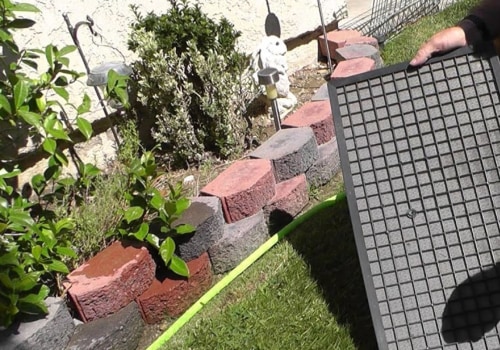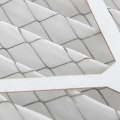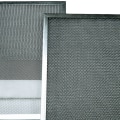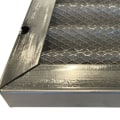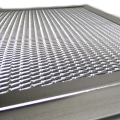When it comes to air filters, there are a variety of options available to homeowners. From disposable filters to electrostatic filters, the choice can be overwhelming. However, one of the most popular options is the washable air filter. Washable air filters are made with breathable cotton fabric and are designed to capture more particles and allow more air to enter the engine, resulting in better long-term engine health.
Filter manufacturers rate the effectiveness of air filters using a scale called the MERV rating table, which represents the minimum efficiency report value. The cheapest disposable air filters are between one and four on this scale, while microparticle air filters are known to exceed 14 in their MERV classification. Unfortunately, reusable air filters don't work better than low-quality products, since they measure less than four on the MERV scale. Electrostatic filters work by drawing air pollutants through their opposing charges.
More particles are captured as air passes through the filters. Filters can fill up with contaminants as time goes on and this can affect their performance. When this happens, replace the disposable filter or clean it if it is washable. Otherwise, the air that flows through these dirty filters can cause poor indoor air quality. Washable air filters can be easily cleaned and replaced at any time, allowing homeowners to remove harmful contaminants.
In addition, the breathable cotton fabric used in these filters tends to better absorb particles and allows more air to enter the engine, resulting in better long-term engine health. To better understand the best type of HVAC air filter for your home, you'll need to understand the different types of air filter technology, as well as the advantages and disadvantages of each type. There are a variety of eco-friendly air filters on the market, and many are made from recycled and recyclable materials. How washable air filters compare to their conventional counterparts depends on how you look at the price. The MERV scale ranges from 1 to 16, where lower numbers indicate less filtering power and higher numbers are very dense, first-line air filters.
See the advantages and disadvantages of washable HVAC filters and how they compare to disposable filters. In general, the decision to switch to a reusable filter depends on what you need, air quality. Washable air filters are more expensive than disposable air filters, but they don't need to be replaced as often. For good air quality all year round, HVAC experts recommend pleated electrostatic filters for your oven. These experts argue that the real job of air conditioning filters is to protect the life of your HVAC system, not to improve air quality. By functioning as a magnet, debris particles adhere to the filter medium as air flows through the filter layers.
With electrostatic filters, the air that passes through the filter passes through several layers of filtration media, usually woven polypropylene, that have an electrostatic charge. In conclusion, washable air filters offer many benefits over disposable ones. They are more effective at capturing microscopic particles which tend to lower indoor air quality in the house. They also allow for greater airflow and require less maintenance than disposable ones. However, they are more expensive upfront but will save money in the long run since they don't need to be replaced as often.

